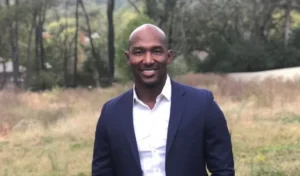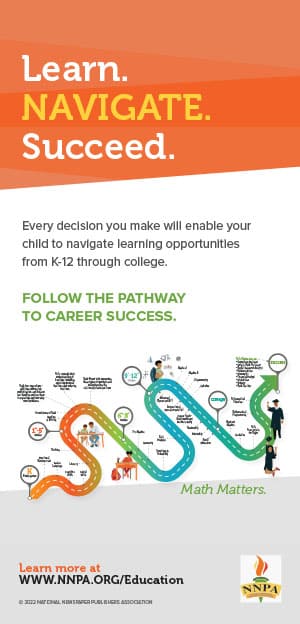By Roy Douglas Malonson
HOUSTON – “Too long have others spoken for us…We wish to plead our own cause.” The origin of his proclamation is found in the first African-American newspaper in the country, The Freedom’s Journal. The chief issue for the African-American at that time hinged on combating the vices of slavery and oppression. Blackpast.org indicates the publication featured, “Editorials deriding slavery, racial discrimination and other injustices against African-Americans.” Blacks needed a balance to “counterweight” the many “White newspapers which supported and promoted slavery and racial bias.” As time progressed and the Black press continued to evolve, scores of African-American newspapers and journals were birthed. We at African-American News & Issues can affirmatively say, we have been in that number for 24 years and counting.
Prior to establishing African-American News & Issues, I have always said, “If I didn’t know no better and believed the image portrayed of Black folks, when I watch the 6 or 10 o’ clock news-I’d be scared of Negroes too.’
It is no secret that rugged depictions and stereotypical assumptions featuring African-Americans, have always consumed televised reporting networks to present a generalized view of the Black community. Nevertheless, we have remained true to not only, addressing and highlighting current and historical realities affecting our communities; but have also provided a platform to many of the greatest personalities from our communities who remain undiscovered by mainstream media and have also tried our best to support members from our communities in a positive fashion.
We don’t expect the Black community to agree with everything we write or every message we present because the fact is, we are all individuals who have a voice to express ourselves as we see fit. That is rather, through writing, speaking, singing, art, music or some other creative form of expression. For, it is the U.S. Constitution which yields us certain rights like, freedom of speech and press.
Through these freedoms, African-American News & Issues and other Black publications have strived to create a podium for the Black culture to express ourselves and be made aware of the issues surrounding us, since as far back as the Freedom’s Journal.
Birth of the Black Press
The Freedom’s Journal was formed in New York by two African-Americans, John Russwurm and Rev. Samuel Cornish on March 16, 1827. The journal included: foreign and domestic news, editorials, biographies, birth and death announcements and advertisements which impacted the Black community. Although Freedom’s Journal was in circulation for two years, it heavily impacted the African-American community and inspired the emergence of Black publishers inclusive with: Frederick Douglass, Philip Alexander Bell, John Mitchell, Jr., Anthony Overton, Robert Lee Vann, Marcus Garvey, John H. Johnson, Fleming Alexander and a long list to follow.
 Frederick Douglass was a self-liberated slave from Maryland. After learning the alphabets from his slave master’s wife, he taught himself how to read and write. Early in life, he sought out an escape from the bonds of enslavement, a mission he accomplished by the age of 20, when he fled to the North. During the Civil War, he strongly opposed slavery and women’s suffrage.
Frederick Douglass was a self-liberated slave from Maryland. After learning the alphabets from his slave master’s wife, he taught himself how to read and write. Early in life, he sought out an escape from the bonds of enslavement, a mission he accomplished by the age of 20, when he fled to the North. During the Civil War, he strongly opposed slavery and women’s suffrage.The North Star, the name of the paper he established had a motto which stated, “Right is of no sex-Truth is of no color-God is the Father of us all, and we are brethren.”
In the first issue, Douglass stated his purpose for establishing the newspaper. He expressed it was, “common sense that those who suffer injustice are those who must demand redress and, thus, African-American authors, editors, and orators must have their own paper with which to share their voices.”
Content such as: slavery abolishment and political issues, editorials, letters from readers, poetry, book reviews and advertisements were produced in the periodical. Though popular in its time, the newspaper did not generate enough to self-suffice.
Consequently, the financial strain resulted in a merger between The North Star and Gerrit Smith’s, Liberty Party Paper, which created the Frederick Douglass’ Paper. After dedicating nearly 12-years as a publisher in the Black Press, Douglass permanently ceased the publication when he left for a lecture tour in England.
However, the journalistic podium that he created for himself paved the way for a foray into politics. To this day, Douglass is known for his work with President Abraham Lincoln, which produced the Emancipation Proclamation.
The Continued Need for the Black Press
It has been proven that each century in American society, yields some form of unbalanced treatment amongst the Black community. During the afflicting days of slavery, reconstruction, Jim Crow laws, segregations, the Civil Rights struggle and other hurdles, the Black press has been an influential platform which has served to bring awareness and empowerment to members of the African-American community. Even today, it serves as a catalyst to speak out for those who have no voice.
It has continued to provide a view as to where we come from, thinks we have overcome and issues we face today. James Baldwin said, “If you know whence you come, there is really no limit to where you can go.” This is the importance of newspapers such as ours and other Black press publications.
It is imperative that we tell and present our own story, because no one is able to tell it the way we can. Because it is Our’ Story. After all we have endured and the current challenges the we are yet faced with, we have a right to tell our own story, since rightfully it is ours to tell. Most people that document history does it in a way that will make themselves and/or their cultures look good or to uplift their own. African-Americans should be no exception to the rule.
African-American News & Issues, 24-Year Journey
In the mid 90’s, chairman of the Acres Home Citizens Chamber of Commerce, Roy Douglas Malonson along with wife and partner Shirley Ann sought after a publication that would be by the people and for the people. Pursuant, Roy contacted several of the existing Black publications at an attempt to produce and generate a quality newspaper that would cater to typical residents of the African-American community; most of whom were often overlooked in other publications. Despite his continued efforts to work with pre-established publishers to create a true Black paper with a Black voice, none was interested.
Determined to provide the community with a newspaper that would give African-Americans a genuine platform, the Malonson’s created the Acres Home Citizens’ News, locally published by Malonson Company in February of 1996. The paper developed an audience as the “official voice of Acreage Homes reporting on schools, churches, businesses and community.” Within four months the community periodical was noticeably a rampant success. The name of the paper was changed to reflect the accurate name of the community, Acreage Homes Citizens’ News.In September of 1996, the name of the paper was changed to Citizens’ News which expanded its circulation from the Acreage Home Community to include other Black communities in North Houston including: Bordersville, Carverdale, Trinity Gardens, Independence Heights, Scenic Woods and Settegast. As the newspaper was in its developmental stages it underwent various styles, designs and formats which can be visibly noted from the premier introduction of the first volume up until its current style and design.
Another name change was implemented into the publication that began to make its presence known within Houston’s North side. In February of 1997 the name was changed from Citizens’ News to Acres Home Citizen with an emphasis of being the link to North Houston African-American communities. In May of 1997, due to the rapid demand for such a unique style of publication, the company initiated the inclusion of a much broader spectrum. As a result, the paper that had been originally formatted and designed to target the Acreage Home community upgraded its name to reflect its circulation area and ever-growing audience. Thus, African-American Neighborhood News evolved. As the paper continued to thrive in its enhancements, the need to report news within the Black community proved to be beneficial towards the ultimate focus of its design. However, the company soon realized that not only was ‘news’ pertinent to the Black community, but the issues that consumed it were just as vital. This concept produced, African-American Neighborhood News & Issues, a format which presented coverage of: injustices, accomplishments, acknowledgements and recognition to members of the African-American community that were not featured in other publications
In October 1997, the Black Neighborhood Marketplace was introduced. This feature was an added avenue to local businesses and organizations to link the community to their locations. The newspaper started out as a monthly publication, transitioned to a bi-weekly edition and necessity made it weekly. As the newspaper continued to increase its presence in Houston, the name was changed to African-American News & Issues to suit the expansion of the circulation that followed. Within a matter of four years the once community paper had become one of the widest circulated and read newspapers’ in the State of Texas with a Black perspective; increasing its audience to over a million readers. Over the years, African-American News & Issues has maintained a reputation that has allowed its readership to be informed of entertainment, educational, local, state, regional, community, religion, community news and events and a wide range of other resourceful information. Although African-American News & Issues has seen a variety of changes, the main objective that Roy and Shirley envisioned has not ceased. African-American News & Issues has never neglected its key vision and mission of reporting and presenting current and historical realities affecting our communities. The 23-year mission and commitment established by Publisher Roy Douglas Malonson continues, “Our paper will keep dealing with injustice until it is balanced.”







